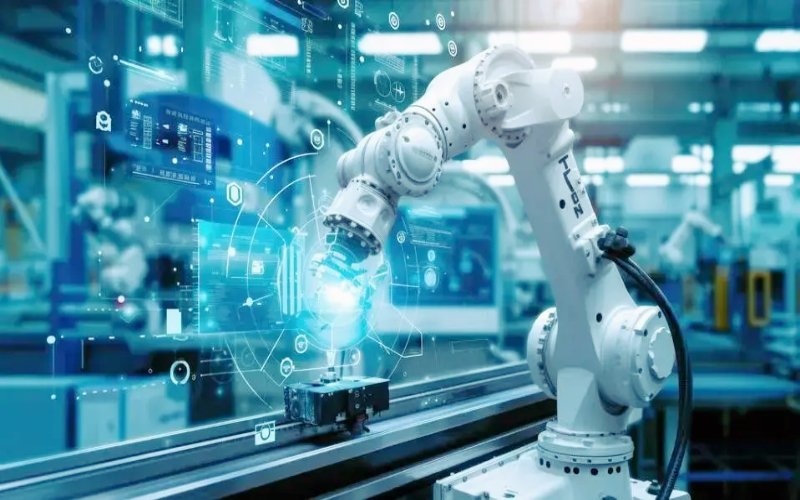In today’s fast-paced industrial world, unplanned equipment downtime can cause significant losses. Enter Predictive Maintenance using IoT—a powerful approach that combines predictive maintenance strategies with the Internet of Things (IoT) technology to enhance operational efficiency and reduce unexpected failures. This article will dive deep into the role of IoT in predictive maintenance, its benefits, key components, real-world applications, challenges, and future trends.
What is Predictive Maintenance?
Predictive Maintenance vs. Traditional Maintenance
Predictive maintenance is a proactive maintenance strategy designed to predict equipment failures before they occur. Unlike traditional maintenance approaches—reactive (fix it when it breaks) and preventive (maintain it at regular intervals)—Predictive Maintenance using IoT leverages real-time data to assess the health of machinery. This method allows companies to address potential issues before they become critical, reducing downtime and maintenance costs.
Why Predictive Maintenance Matters
Predictive maintenance reduces operational costs, optimizes maintenance schedules, and prolongs asset lifecycles. Industries from manufacturing to transportation increasingly rely on predictive maintenance to ensure equipment uptime, making IoT a pivotal technology in this field.
How IoT Enhances Predictive Maintenance
The Role of IoT in Predictive Maintenance
The Internet of Things, or IoT, refers to the network of interconnected devices that communicate data. In predictive maintenance, IoT sensors collect and transmit data in real time, providing actionable insights into the health of industrial equipment. With IoT, predictive maintenance goes from theory to practice, allowing industries to anticipate equipment failures with precision.
Key Components of IoT-Enabled Predictive Maintenance
- IoT Sensors and Devices: IoT sensors measure critical parameters like vibration, temperature, and humidity, monitoring equipment conditions in real time. This data is essential for identifying early signs of equipment degradation.
- Data Analytics Platforms: Collected data is processed and analyzed using cloud-based platforms, enabling companies to detect patterns and trends. This analysis forms the backbone of Predictive Maintenance using IoT by identifying potential issues before they occur.
- Connectivity and Communication: IoT-enabled predictive maintenance depends on seamless communication networks, with protocols like MQTT and LoRaWAN commonly used for reliable data transmission.
Benefits of Predictive Maintenance using IoT
Cost Efficiency and Reduced Downtime
By enabling real-time monitoring, Predictive Maintenance using IoT cuts down on unscheduled repairs and replacements. Companies can maximize equipment availability, lowering operational costs and boosting productivity.
Extended Asset Life Cycle
Regular maintenance based on real-time data ensures that assets are serviced only when necessary, which prolongs their lifespan and reduces wear and tear. This approach optimizes the life cycle of machinery and minimizes resource waste.
Real-Time Monitoring Through IoT
Continuous Monitoring for Improved Performance
IoT-enabled predictive maintenance provides continuous monitoring of equipment, allowing for prompt interventions when anomalies are detected. This capability is invaluable in industries like manufacturing, where even a brief period of downtime can cause significant financial losses.
IoT Data and Predictive Maintenance Insights
The real-time data gathered through Predictive Maintenance using IoT enhances operational transparency, providing teams with valuable insights into equipment performance. This not only prevents sudden breakdowns but also supports smarter, data-driven decisions.
Predictive Analytics in IoT-Powered Maintenance
Leveraging Predictive Algorithms and Machine Learning
Predictive maintenance depends heavily on analytics and machine learning to transform raw IoT data into actionable insights. Machine learning algorithms can identify complex patterns and predict potential failures based on historical data and real-time inputs.
The Predictive Maintenance Process
- Data Collection: Sensors continuously monitor and send data to centralized systems.
- Data Processing: Machine learning models analyze this data for anomalies.
- Failure Prediction: Predictive algorithms identify risks, alerting technicians to potential failures.
Challenges of Implementing Predictive Maintenance with IoT
High Initial Costs and Technical Barriers
Implementing Predictive Maintenance using IoT can require a significant upfront investment in IoT infrastructure, from sensors to data storage solutions. This barrier often challenges smaller businesses or companies new to IoT.
Data Security and Privacy Concerns
IoT devices constantly collect sensitive data, which may lead to privacy concerns and security risks. Protecting this data through encryption and regular security updates is critical for safeguarding equipment and company information.
Real-World Applications of Predictive Maintenance using IoT
Case Studies in Manufacturing, Energy, and Transportation
- Manufacturing: In manufacturing, Predictive Maintenance using IoT has reduced downtime by identifying equipment problems before they escalate. Companies have reported lower maintenance costs and fewer unexpected halts in production.
- Energy Sector: Energy companies employ IoT-based predictive maintenance for equipment like transformers and turbines, improving reliability and service continuity.
- Transportation: IoT-enabled predictive maintenance is used to monitor fleets, ensuring vehicles are always in optimal condition and reducing breakdown risks.
Return on Investment (ROI) of IoT-Enabled Predictive Maintenance
Companies implementing IoT-driven predictive maintenance report substantial ROI from reduced downtime, extended equipment life, and minimized repair costs. These success stories highlight the financial and operational benefits of adopting this technology.
The Future of Predictive Maintenance with IoT
Emerging Trends: AI and 5G in Predictive Maintenance
With the rise of AI and the implementation of 5G networks, Predictive Maintenance using IoT is set to become even more powerful. AI can bring more precision to predictive algorithms, while 5G networks will enhance connectivity and data transfer speeds.
Expanding Industrial Applications
As IoT technology advances, predictive maintenance will expand into new industries, including healthcare, agriculture, and smart cities. This expansion will create more resilient and efficient operations across multiple sectors.
Conclusion: The Importance of IoT in Predictive Maintenance
Predictive Maintenance using IoT represents a transformative step toward smarter, data-driven industrial maintenance strategies. By enabling real-time monitoring, predictive analytics, and proactive interventions, IoT is shaping the future of maintenance across industries. Embracing IoT for predictive maintenance not only enhances operational efficiency but also positions companies for long-term success in an increasingly competitive landscape.
Also visit on techitl.com.




